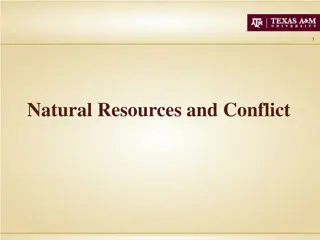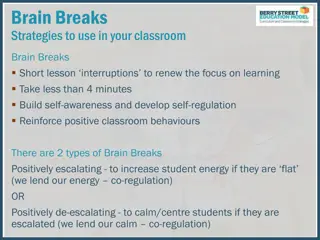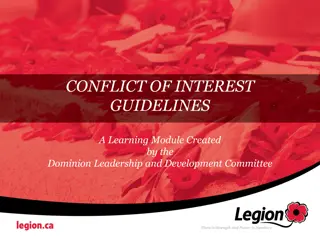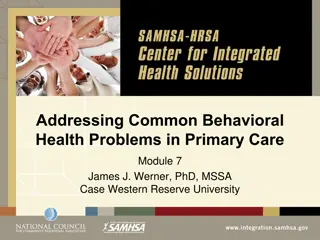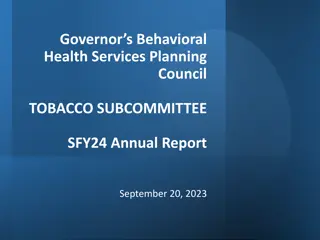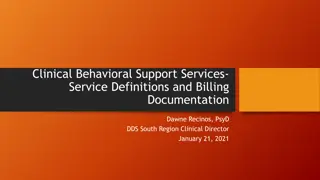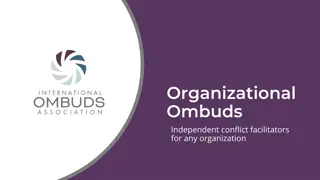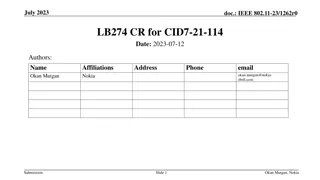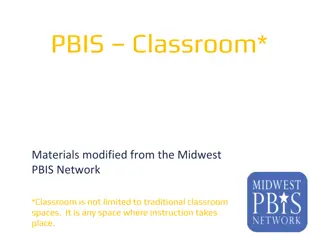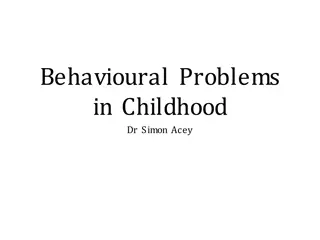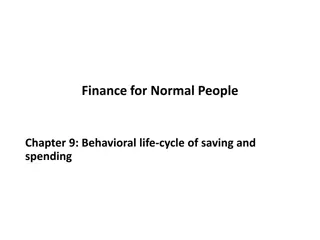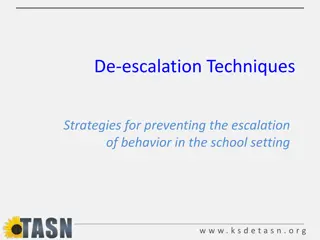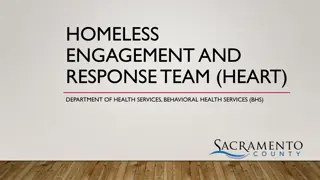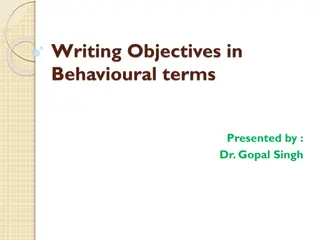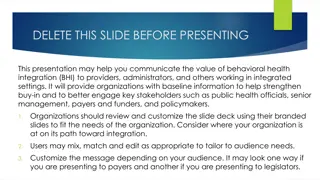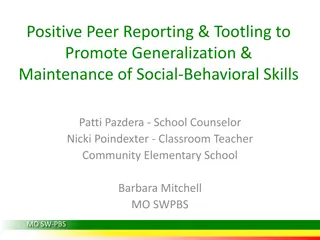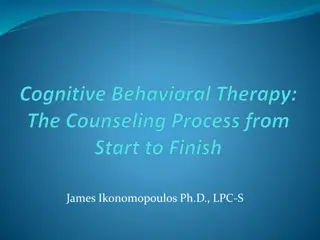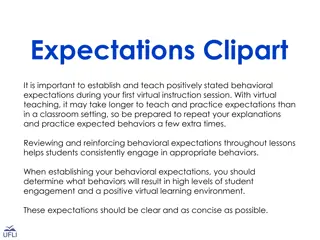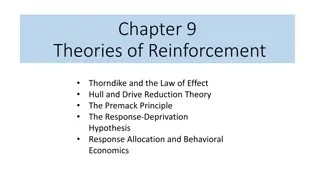Techniques for De-escalating Conflicts and Behavioral Issues
Reduce the intensity of conflicts and potential violence by de-escalating situations through various interventions. Recognize behaviors motivated by external and internal stimuli, peak periods of escalation, and strategies for relationship building. Address oppositional and defiant behaviors, establish policies, and promote positive interactions to create a conducive environment for all. Stay aware, respond appropriately, and foster a supportive community.
- Conflict resolution
- Behavior management
- De-escalation techniques
- Relationship building
- Intervention strategies
Download Presentation

Please find below an Image/Link to download the presentation.
The content on the website is provided AS IS for your information and personal use only. It may not be sold, licensed, or shared on other websites without obtaining consent from the author. Download presentation by click this link. If you encounter any issues during the download, it is possible that the publisher has removed the file from their server.
E N D
Presentation Transcript
reduce the intensity of (a conflict or potentially violent situation). When you de-escalate someone or some situation, you act to improve the situation (and not make it worse.) Your intervention might be something you do, something you say or even choosing to do or say nothing. Just about anything could be the right response.
Students will display a behavior or act in a specific way to either: Escape Something Avoid Something Gain Something This is not always easy to recognize but we as teachers and role models to students need to remain curious about the real reason behind the Behavior of Concern
Behavior motivated by stimuli located outside of the environment. (family relationships, neighborhood issues, legal issues, home issues) Carry in Behavioral Issues that are generated from within the program. (bullying, over stimulation, peer to peer, staff to peer, academic difficulties) Carry over Behavior occurs when an individual is reminded of past traumatic experience. (smells, sights, transitions, interactions) Tune in
Peak Period of Escalation
First and foremost you need to be aware of yourself and your surroundings.
Oppositional and Defiant Behaviors: Making deals Last word Blatant rule violation Constant questioning Manipulating staff Refusal to comply Loopholes ONE RESPONSE DOES NOT FIT ALL. STUDENTS WILL INSULT YOUR: CHARACTERISTICS- physical appearance/mannerisms HOME & HEARTH: What you value PROFESSIONALISM How you do your job
Building and program policies Staff perform assigned responsibilities Working as a team Knowing the population that you are working with Establishing rules and Consequences Consistency and routines Transitions Planning and executing effective and successful transitions RELATIONSHIP BUILDING
Meet and Greet Demonstrate openness Interest relating Random positive connections Praise Utilize appropriate humor Teach acceptable behavior Recognize milestones Be aware of events Share mealtimes Participate when appropriate in activities Positively correct behavior
Staff presence: Possibly change out staff, more staff arrive, or some staff leave. Affect: What is the staffs demeanor, what message is the staff portraying(calm, confidence, unsure, anger) Planned ignoring: Choosing to disregard inconsequential behavior and/or waiting to address a situation. Signals: conveying a message through some type of movement Eye Contact Expressions Body language Gestures Proximity Control- Non-threatening and do not invade personal space Touch Prompt
This is a purposeful control of tone, rate of speech and volume to clarify or emphasize meaning. How can changing your tone, rate and volume affect a students escalation or de-escalation?
Encouragement: Staff urge the individual to participate, cooperate and or communicate Indicate Concern- be empathetic. Use I & we messages Use a soothing demeanor Use clear language- patience and repetition Encourage participation and cooperation Attempt to divert focus- temporarily change attention Change the environment Offer choices- options that would promote calming and rethinking
Paraphrase techniques Clarify and demonstrate interest by restating the conversation Open ended questions and phrases Tell me more , help me understand , please Explain Reflecting feelings: Identify the current feeling whether it is being expressed and observable or hidden Perception Checking Understand the motivation for the behavior Behavior description Identify the specific behavior





